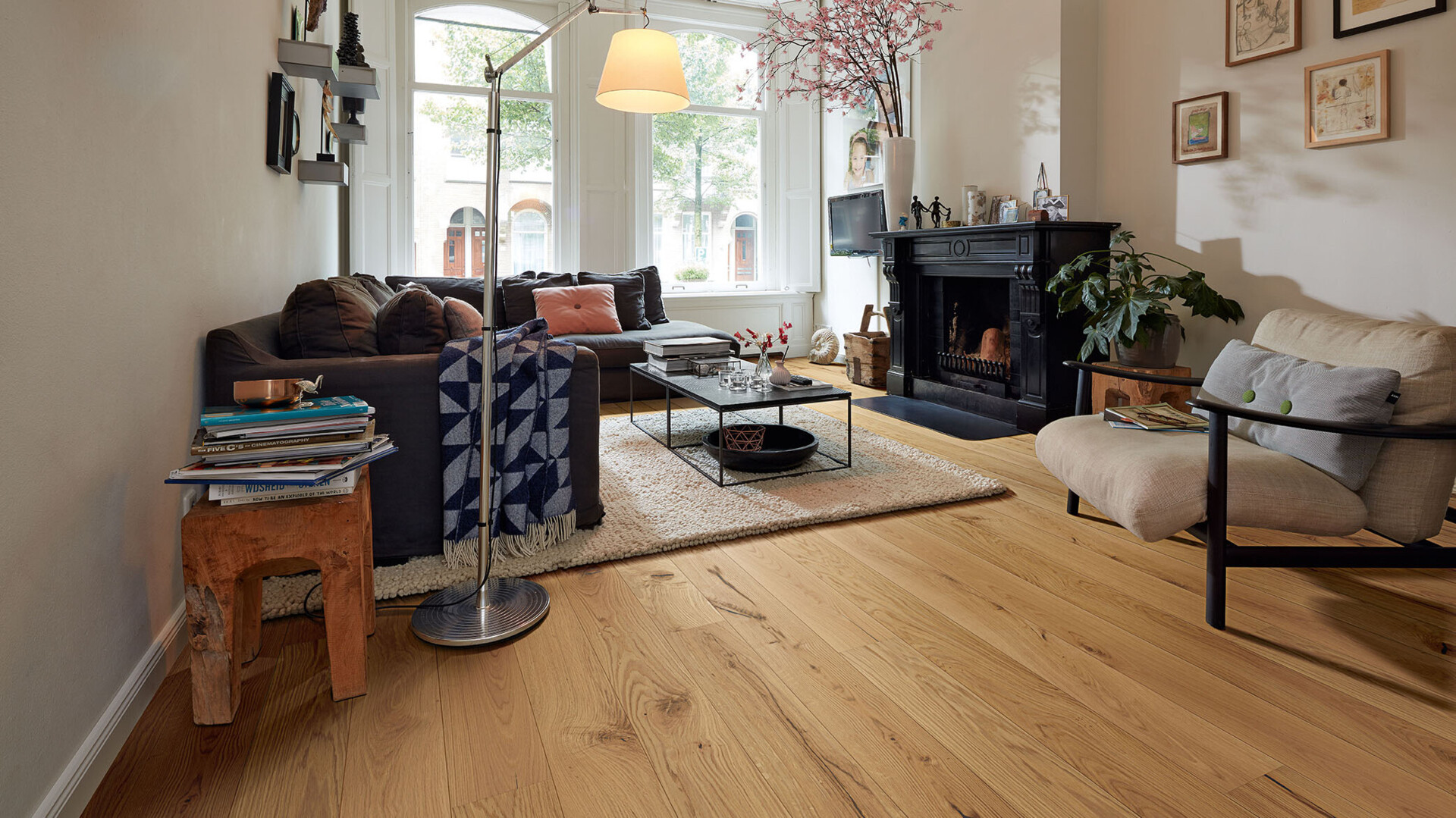
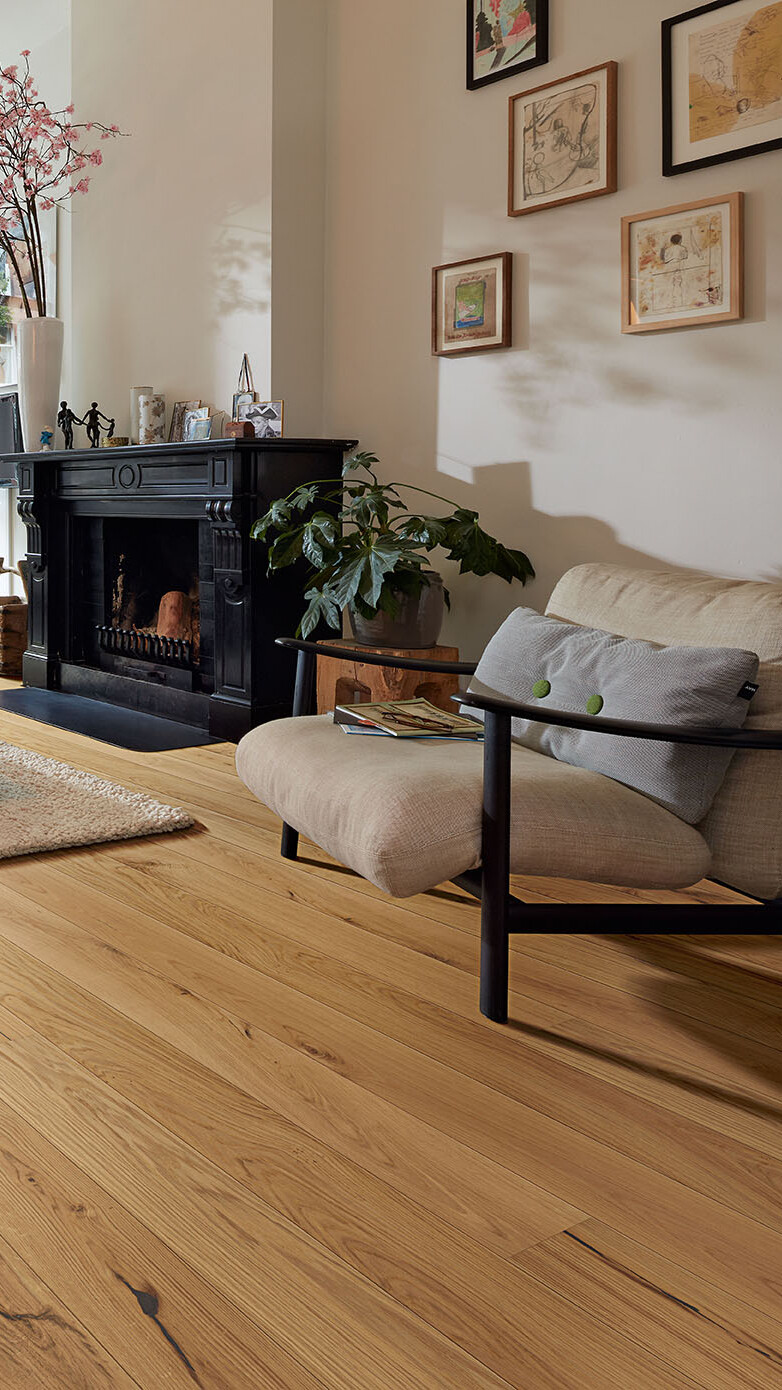

The variant made of robust oak wood is the classic among parquet floorings. The material is considered to be particularly hard and visually adaptable – pretty much perfect, isn't it? As a matter of fact, other woods also have a lot to offer and can easily keep up with oak. It only depends on which criteria are considered important for a flooring.
When buying a wood flooring, many people opt directly for oak variants. There's nothing wrong with this per se, since oak wood has many positive properties that make it a suitable material for flooring. But then again, a touch of curiosity remains about what a parquet flooring made of maple or walnut wood might have to offer. Can it compete with the advantages of oak parquet flooring? There is no single, sweeping answer to this question – it rather depends on what the flooring needs to be able to do.
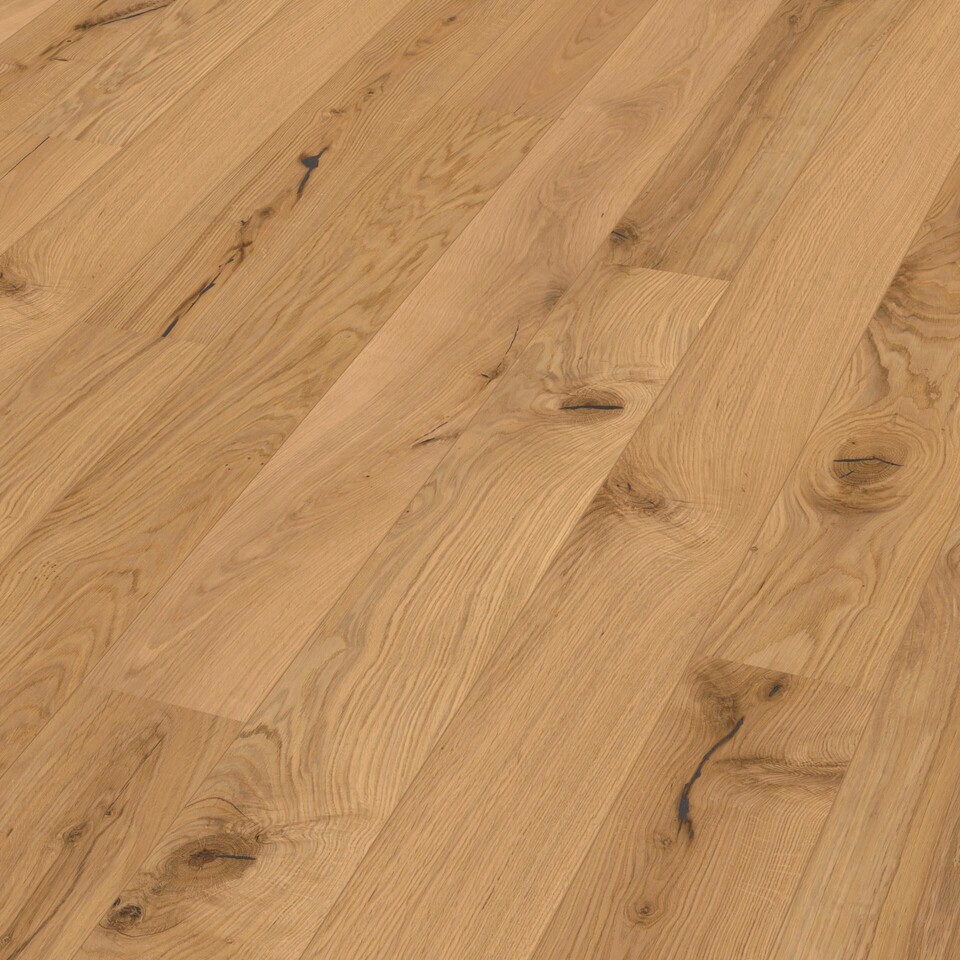
Oaks are widespread and native to nearly the entire northern hemisphere. Many species grow on the North American continent. The wood is extremely attractive for the construction and furniture industry because it has a uniform grain and is very hard, yet slightly elastic. Since the majority of the oak wood processed in this country comes from Europe, it has better environmental credentials than tropical woods thanks to the shorter transport distances.
Customers in the wood or furniture trade have probably already noticed that oak forms the foundation of many decors. From almost white to deep black variants, countless items of furniture and flooring made of oak are available. After all, it can be processed and pre-treated in a variety of ways: It can be stained, oiled, smoked and much more. With its rustic look, this wood is an integral part of home interior designs in the popular country house style.
The hardness of a wood is indicated in the Brinell scale. To determine this, a steel ball with a diameter of 10 mm is pressed with a certain force (100-1000 N) onto the wood to be tested for a few seconds. The resulting impression is then measured. The hardness of the wood is calculated on this basis. The higher the Brinell number, the harder the wood. Oak and beech wood are relatively hard, whereas domestic softwoods such as spruce and pine have a comparatively low Brinell number and are considerably softer. Consequently, these latter materials are only of limited use as real wood flooring. This is because unattractive nicks and scratches would quickly appear in the precious flooring – a situation that would be doubly frustrating in view of the costs and work involved in laying the flooring.
Among the European softwoods, however, the larch stands out – and not only because of its high-contrast grain. Since it is extremely weather-resistant, it is often used for outdoor installations such as terraces. However, its lower hardness means that larch wood does not cope so well in rooms with heavy traffic.
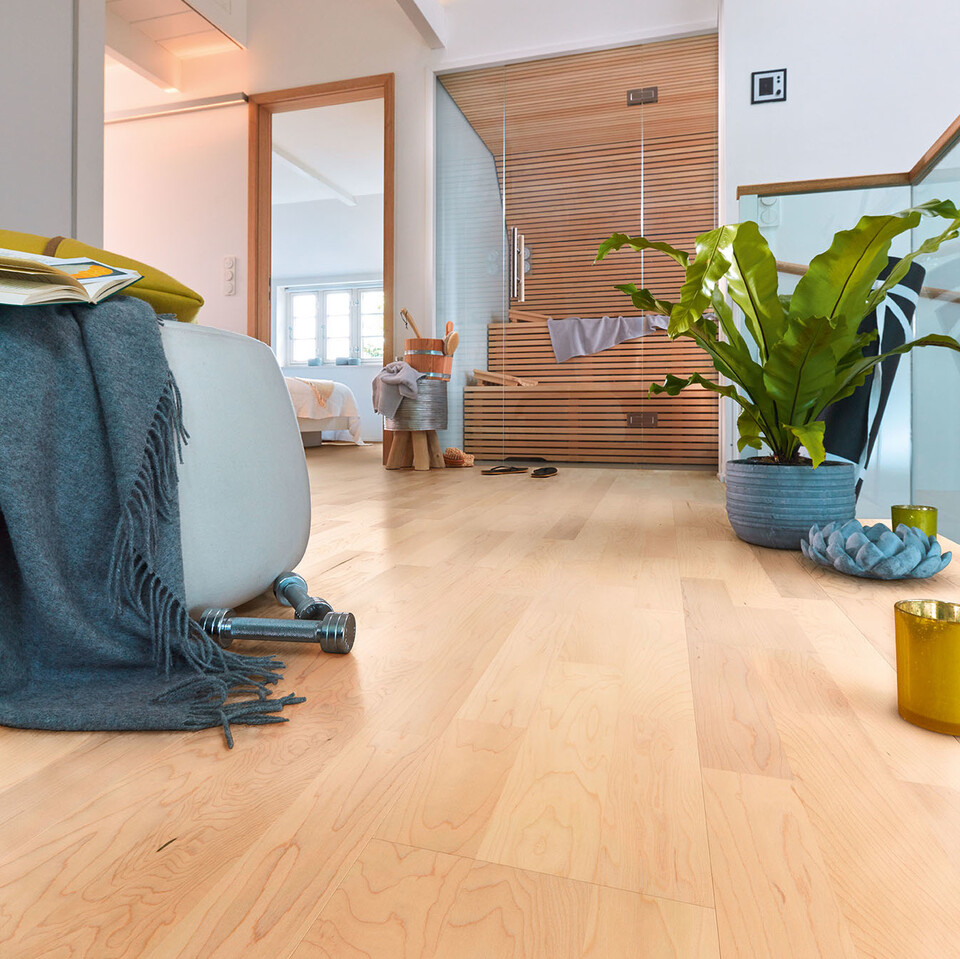
Maple is counted among the fine woods due to its expressive colouring. European maple wood is characterised by a harmonious colouring without a highly visible grain. Instead, it has a fine and homogeneous structure. While sycamore maple wood is quite light and slightly yellowish, the wood of the Norway maple has a charismatic reddish colouring. Especially the wood’s light nuances are often used in interiors based on Nordic design.
In terms of hardness, the wood can hold its own with oak, making it an adequate alternative if the soft, light colouring of maple wood is visually more appealing. As it is relatively neutral, it harmonises with a wide range of furnishing and design styles. The subtle colouring of the floor can then be used to enhance the colour of the wall, for example.
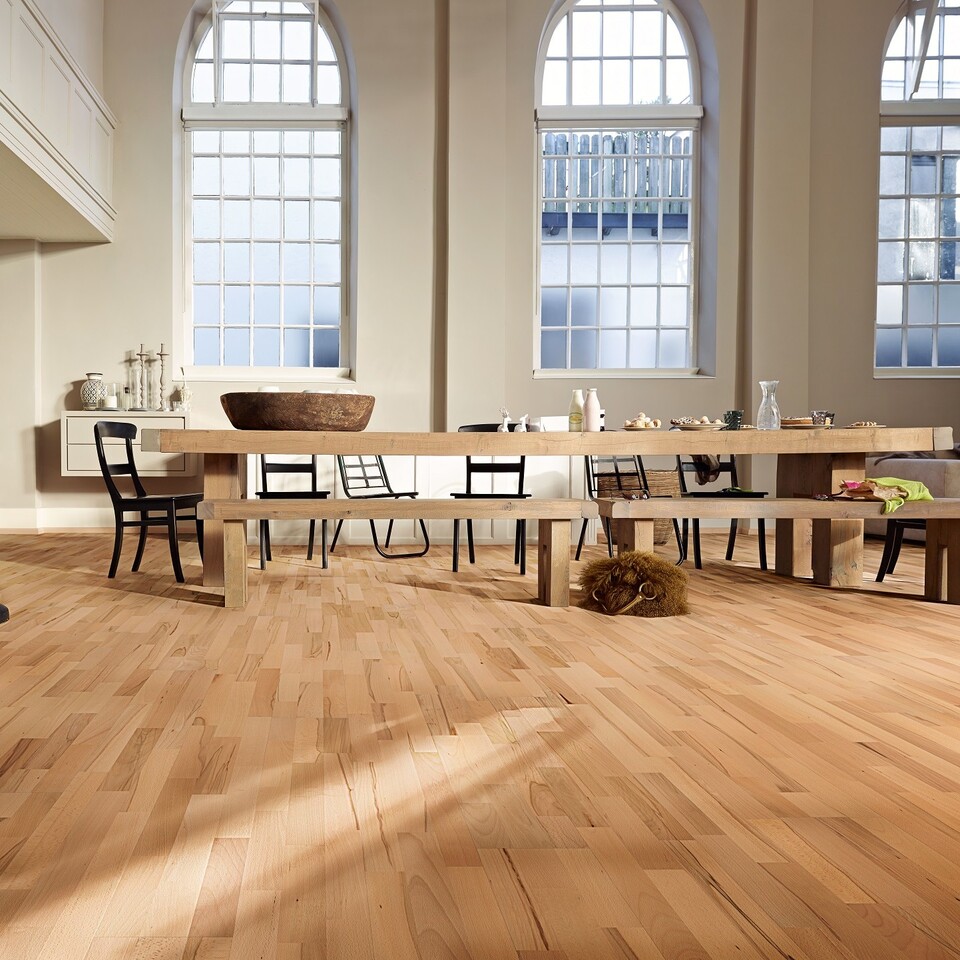
As the most widely used wood in Europe, beech wood stands out again and again – not only in furniture production, but also in floorings.
It has a harmonious, soft structure with a slightly reddish colour. In combination with white walls and a natural interior, parquet flooring made of beech wood is an excellent choice from a visual point of view. However, since beech has a slightly greater tendency to shrink and swell, it should only be laid in dry living spaces with a constant humidity.
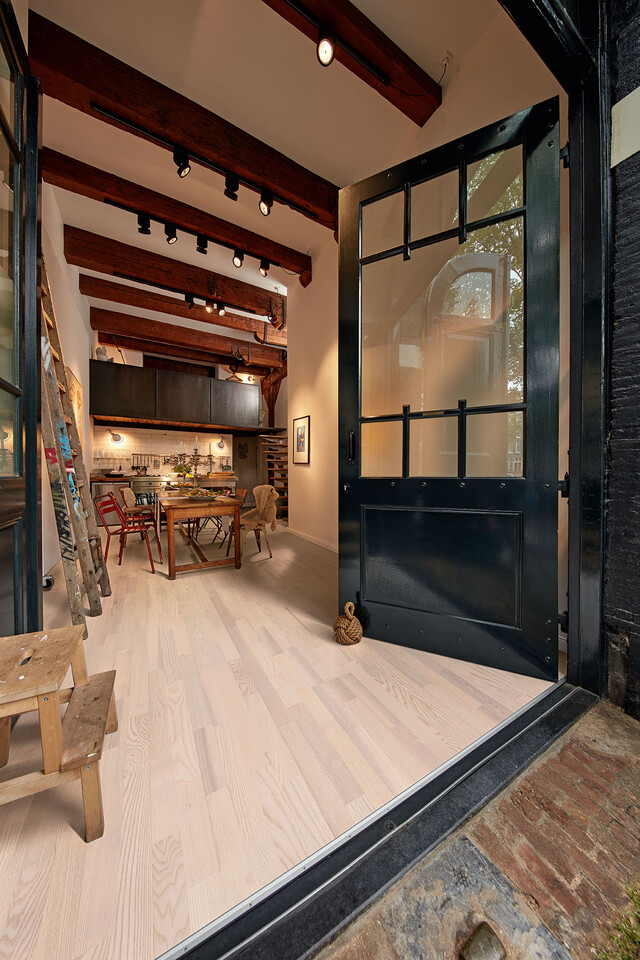
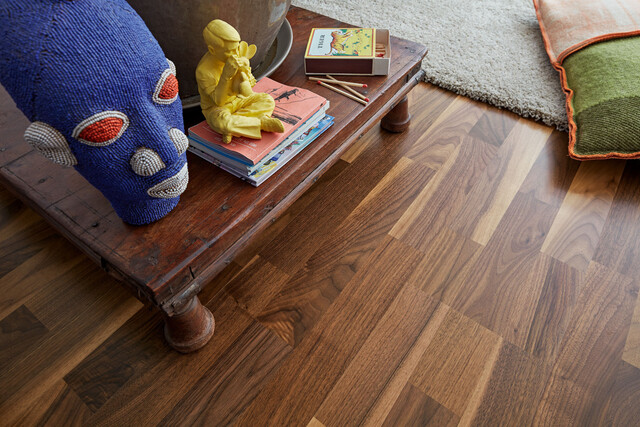
The fact is that all woods have their own advantages and disadvantages when it comes to their application for parquet flooring. As a general rule, it's important to assess what demands will be made on the flooring before purchasing it: